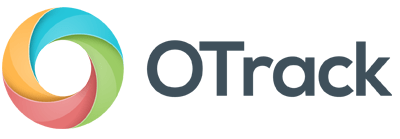3 most common changes made in pupil tracking… have you done these?
Monday 14th January 2019We work with over 1600 schools, so we’re in a great position to watch how pupil tracking evolves.
Over the last 18 months we’ve been monitoring how schools track pupils, and we’ve taken a look at what’s changed. This work has highlighted some common practices, and how schools have altered them.
We’ve seen a huge increase in complicated theories for pupil tracking since the removal of levels. The good news is, we’ve recently seen many schools stripping back their ideas, and the feedback we get from these schools is always positive.
It’d be unfair of us if we don’t share this info with you! So here goes, the 3 most common changes schools have made to their tracking methods.
1: Simplify tracking to reduce workloads
We’ve always tried to build OTrack in a way that means it will work how you want it to. This, we think, is great – but it also means that you can keep adding more and more features to your tracking system. Before you know it, you can end up inundated with mountains of jobs, data and reports.
Pupil trackers have many features available. Summative tracking, objective-based tracking, tracking the outcomes of tests – and of course loads (and loads) of analysis reports. But remember, just because they’re available it doesn’t mean you should have to use them.
Make sure your tracker has the ability to keep things simple. You need the option to only use the features that suit your school, and then hide the rest.
Find out how we helped Thorngumbald Primary School simplify their tracking
2: Remove ‘new levels’
It seems like a long time since the majority of schools were using Entering, Developing and Secure (E, D, S) to assess. With E set as expected in Autumn, D in Spring and S in the Summer term.
At the time, many thought this was ‘Assessing without levels’. In hindsight it’s obvious now that it was ‘Assessing with new levels’. We started to see a slight move away from ‘E, D, S’ during the 2015/16 academic year. This increased further in following years.
Consider using a Point In Time Assessment model (PITA). We’ve found that more and more schools are starting to use this robust method. It isn’t a rework of levels, and it’s recommended by many educational professionals.
You can read more about PITA in the articles below:
- Here’s our PITA blog: What is Point In Time Assessment?
- Check out point number 2 in this blog: What I think a primary tracking system should do by James Pembroke, the ‘TES Data Doctor’.
OTrack Tip: Consider using a Point In Time Assessment model (PITA). We’ve found that more and more schools are starting to use this robust method. It certainly isn’t levels, and it seems to be widely recommended by many educational professionals.
3: Don’t measure progress, monitor it
This is a big one, and sometimes the one that schools find hardest to leave behind. In a nutshell: don’t measure progress using points, monitor progress using your professional knowledge. This works nicely with the PITA method of tracking.
Get in touch
If you want to ask questions about any of these points, or if you would like us to visit your school to discuss this, get in touch and we’ll get something arranged.






